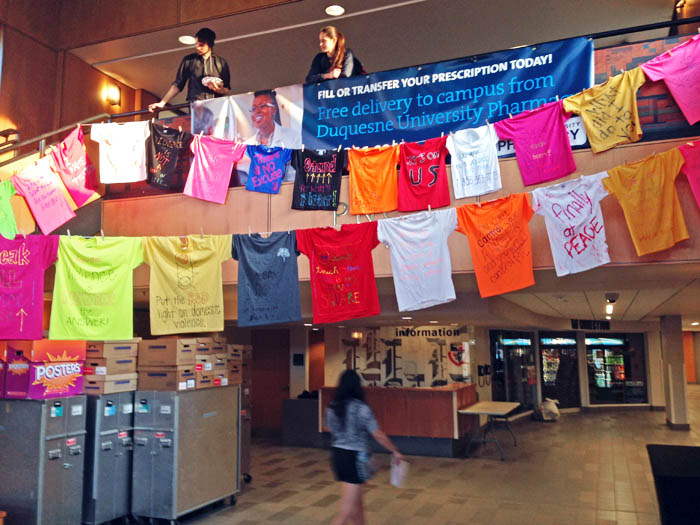 1/24/2019
1/24/2019
Kellen Stepler | Staff Writer
As said by Oscar the Grouch: “I love trash.”
However, the Hogan Dining Center would disagree.
On Thursday, Jan. 17, the Hogan Dining Center weighed food waste between 5 p.m. and 7:30 p.m. According to the Waste-O-Meter posted outside the conveyor belt, there was a total of 123 pounds of waste, which equals 1.89 ounces per person.
The dining hall has previously measured the amount of waste on Aug. 29, 2017, Nov. 28, 2017, April 24, 2018, and Dec. 6, 2018. Results from these dates are also posted on the wall by the conveyor belt and dish washers.
The data from Thursday continued a downward trend for waste production at Hogan. Since the weigh-in on Nov. 28, 2017, the total number of wasted pounds dropped from 183 to 123.
Moreover, the total waste-per-person has fluctuated since. These numbers were at a high at the November weigh-in, where it was 2.41 ounces of waste per person, and Apr. 24, 2018, where each person accumulated 2.38 pounds of waste. Thursday’s results stack up well, ranking fourth out of five in terms of least amount of waste per person.
Most of the waste is accumulated in between the hours of 6 p.m. and 7 p.m. On Thursday, 29 pounds of waste were weighed in at 6 p.m., and 31 pounds of waste were weighed in at 7 p.m., the highest total throughout the night. This trend is continued throughout all nights waste was recorded.
The most waste ever recorded at a weigh-in was 45 pounds at 6:30 p.m. on Nov. 28, 2017, where both the waste total and waste-per-person were at their highest.
Weighing waste can be an eye-opening study that informs the public how much food we are not using. A 2016 study compiled by The International Food Information Council (IFIC) Foundation found that 30 percent of Americans say that “they don’t create any food waste.”
Additionally, the IFIC Foundation estimates that “40 percent of food produced for our consumption never reaches a human stomach.”
The U.S. Department of Agriculture notes that Americans waste enough food every day to fill a 90,000-seat football stadium. With a seating capacity of 2,200, that’s enough to fill about 41 Rooney Fields.
Additionally, the positives of reducing wasted food are immense, especially from an environmental standpoint.
According to the U.S. Environmental Protection Agency, the benefits of reducing wasted food are that it reduces methane emissions from landfills and lowers your carbon footprint, and that it conserves energy and resources, preventing pollution involved with the growing, transporting, manufacturing and selling of food.
With all the benefits there are of reducing waste, Parkhurst dining makes campus diners aware of how much food is being unused.



